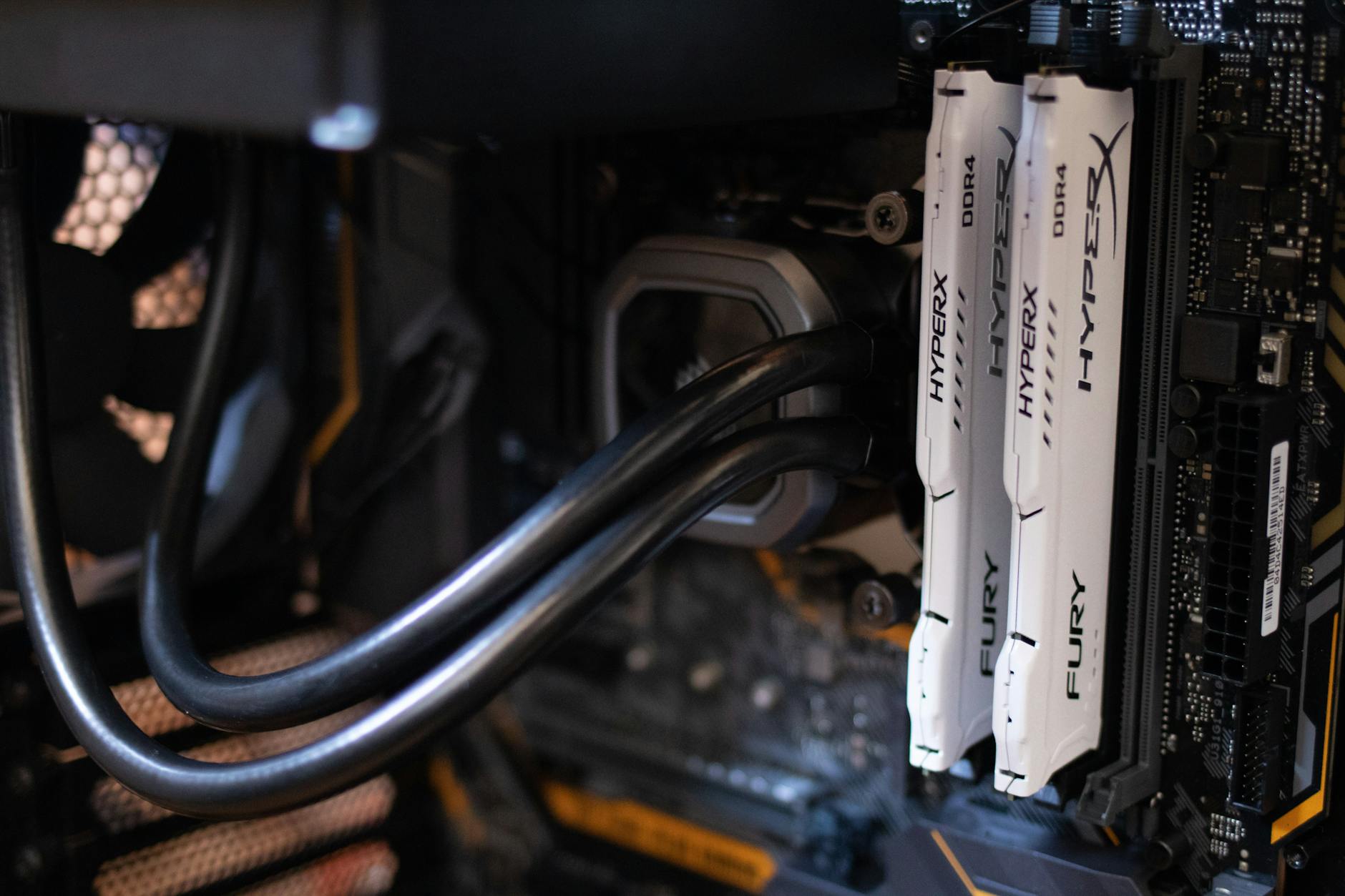Have you ever experienced the frustration of purchasing a new domain, only to be greeted with a “Server Not Found” error when trying to access your website? 😖 It’s a common issue that can leave you feeling helpless and questioning your decision to venture into the online world. But don’t worry – you’re not alone, and there’s a solution!
In this blog post, we’ll dive deep into the root causes of the “Server Not Found” error and guide you through a step-by-step process to fix it. Whether you’re a seasoned webmaster or a newcomer to the digital landscape, our comprehensive troubleshooting guide will help you get your website up and running in no time. From verifying domain registration to resolving hosting issues, we’ll cover all the bases to ensure your online presence shines bright. 🌟
Join us as we explore the ins and outs of domain management, DNS configuration, and hosting solutions. By the end of this article, you’ll be equipped with the knowledge to tackle the “Server Not Found” error head-on and prevent it from happening in the future. Let’s get started on your journey to a fully functional website!
Understanding the “Server Not Found” Error
Common causes of the error
The “Server Not Found” error typically occurs due to several reasons:
- DNS propagation delays
- Incorrect DNS configuration
- Domain registration issues
- Server downtime or misconfiguration
- Browser cache problems
Understanding these causes is crucial for effectively troubleshooting the issue. DNS propagation, for instance, can take up to 48 hours, during which your new domain might not be accessible globally.
How it relates to domain purchases
When you purchase a new domain, several steps need to be completed before your website becomes accessible:
- Domain registration confirmation
- DNS server assignment
- Hosting account setup
- Website files upload
If any of these steps are incomplete or incorrect, it can lead to the “Server Not Found” error. For example, if your domain registrar hasn’t properly linked your domain to the correct nameservers, visitors will encounter this error when trying to access your site.
Impact on website accessibility
The “Server Not Found” error significantly affects your website’s accessibility:
- Visitors cannot reach your website
- Potential loss of traffic and customers
- Negative impact on search engine rankings
- Disruption of email services associated with the domain
It’s crucial to resolve this issue promptly to minimize these impacts. Quick troubleshooting and resolution can help maintain your online presence and ensure a smooth user experience for your visitors.
Now that we’ve explored the fundamentals of the “Server Not Found” error, let’s move on to verifying your domain registration and settings to start resolving the issue.
Verify Domain Registration and Settings
A. Check domain registration status
When encountering a “Server Not Found” error after purchasing a domain, the first step is to verify your domain registration status. Here’s what you need to do:
- Visit your domain registrar’s website and log into your account
- Locate your domain in the list of registered domains
- Check the expiration date to ensure it hasn’t lapsed
- Verify that your contact information is up-to-date
- Confirm that the domain is fully activated and not in a pending state
If you find any issues with your registration status, contact your domain registrar immediately for assistance.
B. Confirm correct nameserver configuration
Proper nameserver configuration is crucial for your domain to function correctly. To verify:
- Log into your domain registrar account
- Navigate to the domain’s DNS settings or nameserver section
- Ensure the nameservers listed match those provided by your hosting company
- If they don’t match, update them with the correct nameserver information
Incorrect nameserver configuration is a common cause of the “Server Not Found” error, so double-checking this step is essential.
C. Review DNS propagation time
After making changes to your domain’s nameservers or DNS settings, it’s important to allow time for these changes to propagate across the internet. This process can take anywhere from a few hours to 48 hours. During this time:
- Be patient and avoid making further changes
- Use online DNS propagation checking tools to monitor the progress
- Clear your browser cache and try accessing your website from different devices and networks
D. Verify domain pointing to correct hosting account
Now that we’ve covered registration and DNS issues, let’s ensure your domain is correctly linked to your hosting account:
- Log into your hosting control panel
- Look for a section related to domains or addon domains
- Confirm that your domain is listed and properly configured
- Check that the domain is pointing to the correct directory on your hosting server
If you find any discrepancies, update the settings accordingly or contact your hosting provider for assistance. With these steps completed, you’ll be well on your way to resolving the “Server Not Found” error and getting your website up and running.
Troubleshoot DNS Configuration

Update DNS records
When troubleshooting DNS configuration, the first step is to ensure your DNS records are correctly set up. Here’s what you need to do:
- Log into your domain registrar’s control panel
- Navigate to the DNS management section
- Verify that the following records are correctly configured:
- A record: Points to your website’s IP address
- CNAME record: Directs subdomains to your main domain
- MX records: Essential for email routing
- TXT records: Used for domain verification and security
If any records are missing or incorrect, update them according to your hosting provider’s specifications. Remember that DNS changes can take up to 48 hours to propagate fully.
Clear local DNS cache
Sometimes, your computer may store outdated DNS information. Clearing your local DNS cache can help resolve the “Server Not Found” error:
- For Windows: Open Command Prompt and type
ipconfig /flushdns - For macOS: Open Terminal and enter
sudo dscacheutil -flushcache; sudo killall -HUP mDNSResponder - For Linux: Use
sudo systemd-resolve --flush-cachesorsudo service network-manager restart
Use online DNS checking tools
Online DNS checkers can provide valuable insights into your domain’s DNS configuration. Popular tools include:
- DNSChecker.org
- MXToolbox
- Google Admin Toolbox
These tools can help identify issues with DNS propagation or incorrect record settings.
Contact domain registrar for assistance
If you’ve exhausted all other options, don’t hesitate to reach out to your domain registrar’s support team. They can:
- Verify that your domain is properly registered
- Check for any issues on their end
- Provide guidance on correct DNS configuration
With these steps, you should be well-equipped to troubleshoot DNS configuration issues. Next, we’ll explore how to resolve hosting-related problems that may be causing the “Server Not Found” error.
Resolve Hosting-Related Issues

Ensure hosting account is active
When facing a “Server Not Found” error, it’s crucial to verify that your hosting account is active and in good standing. Log into your hosting control panel and check for any notifications about account suspension or expiration. Ensure that all payments are up-to-date and that there are no outstanding issues with your account. If you find any discrepancies, contact your hosting provider immediately to resolve them.
Check server status and uptime
Server downtime can often be the culprit behind the “Server Not Found” error. To investigate:
- Use online server monitoring tools to check your server’s status
- Review your hosting provider’s status page for any reported issues
- Contact your host’s support team for information on recent outages or maintenance
If you discover any server-related problems, wait for your host to resolve them or consider temporary alternatives like a content delivery network (CDN) to keep your site accessible.
Verify correct domain configuration in hosting panel
Proper domain configuration within your hosting panel is essential for your website to function correctly. Follow these steps to ensure everything is set up correctly:
- Log into your hosting control panel
- Locate the domain management section
- Confirm that your domain is correctly added and associated with your hosting account
- Check that the document root or public_html directory is properly set for your domain
If you find any misconfigurations, make the necessary adjustments and allow time for the changes to propagate. Remember, resolving hosting-related issues is a crucial step in fixing the “Server Not Found” error. Once you’ve addressed these potential problems, you can move on to testing alternative access methods if the issue persists.
Test Alternative Access Methods
Use IP address instead of domain name
When facing a “Server Not Found” error, accessing your website through its IP address can help determine if the issue lies with your domain name or the server itself. Here’s how to do it:
- Obtain your website’s IP address:
- Contact your hosting provider
- Use online tools like “ping” or “nslookup”
- Check your hosting control panel
- Enter the IP address directly into your browser’s address bar
- If the website loads, the problem is likely related to DNS configuration
This method bypasses the domain name system, allowing you to access your site directly through its numeric address.
Try different browsers and devices
Testing your website across various browsers and devices can help isolate the issue:
- Use multiple browsers (Chrome, Firefox, Safari, Edge)
- Clear browser cache and cookies before testing
- Try accessing the site on different devices (computer, smartphone, tablet)
- Use both Wi-Fi and cellular data connections
If the site loads on some browsers or devices but not others, the problem may be browser-specific or related to local network settings.
Access website through a VPN or proxy
Using a VPN or proxy server can help determine if the issue is related to your local network or ISP:
- Choose a reputable VPN service or free proxy server
- Connect to a server in a different location
- Attempt to access your website through the VPN or proxy
If successful, the problem may be related to your local network configuration or ISP’s DNS servers. This method can also help bypass potential geographical restrictions or ISP-level blocks.
By exploring these alternative access methods, you can gather valuable information about the nature of the “Server Not Found” error and take appropriate steps to resolve it.
Seek Professional Support

Contact hosting provider’s technical support
If you’ve exhausted all troubleshooting steps and still can’t resolve the “Server Not Found” error, it’s time to reach out to your hosting provider’s technical support team. These experts are well-versed in domain and hosting issues and can offer valuable assistance. Here’s what you should do:
- Gather all relevant information:
- Domain name and registration details
- Hosting account information
- Error messages and screenshots
- Steps you’ve already taken to troubleshoot
- Contact support through their preferred channels (e.g., live chat, ticket system, or phone)
- Clearly explain the issue and provide the gathered information
- Follow their instructions carefully and ask for clarification if needed
Consult with a domain management expert
Sometimes, the complexity of domain-related issues requires specialized knowledge. A domain management expert can provide in-depth analysis and solutions for persistent “Server Not Found” errors. They can:
- Review your domain’s DNS configuration
- Check for any domain transfer or ownership issues
- Identify potential conflicts with domain registrar settings
Engage a web developer for advanced troubleshooting
For more complex scenarios, especially if your website involves custom configurations or advanced features, engaging a web developer might be necessary. A skilled developer can:
- Investigate server-side issues
- Review and optimize website code
- Ensure proper integration between your domain, hosting, and website
By seeking professional support, you increase the chances of quickly resolving the “Server Not Found” error and getting your website up and running smoothly. Remember to provide these experts with all the necessary information to expedite the troubleshooting process.

Fixing the “Server Not Found” error after purchasing a domain requires a systematic approach. By verifying domain registration, troubleshooting DNS configuration, and addressing hosting-related issues, you can often resolve this frustrating problem. Remember to test alternative access methods and be patient, as DNS changes can take time to propagate.
If you’ve exhausted all options and still encounter difficulties, don’t hesitate to seek professional support. With persistence and the right approach, you’ll soon have your newly purchased domain up and running, ready to showcase your website to the world.
